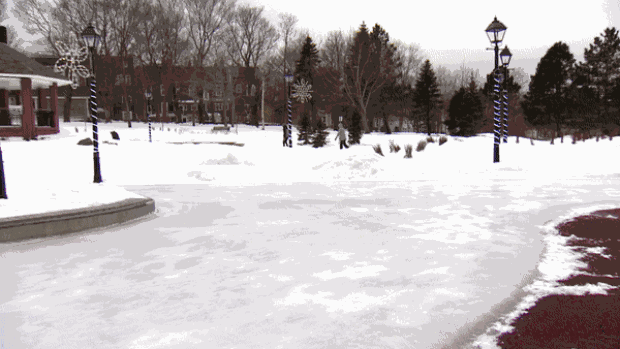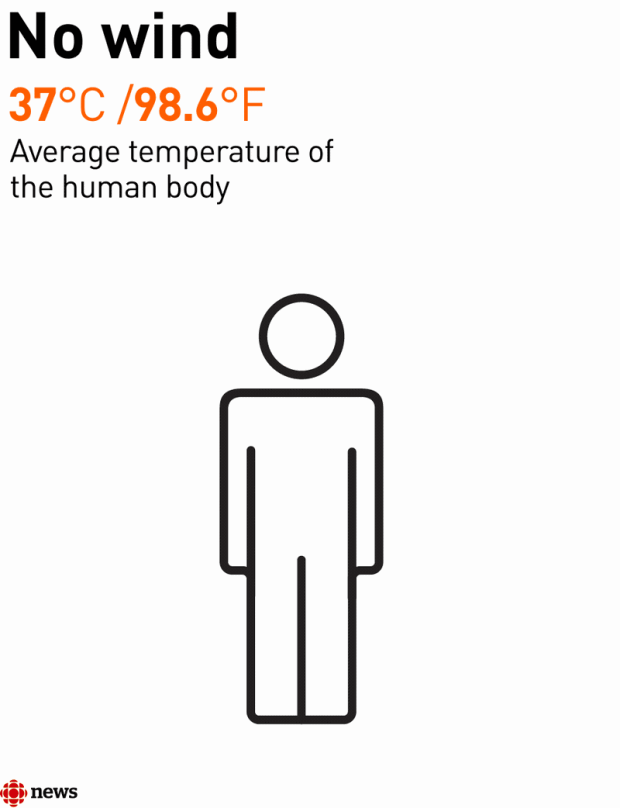It's a wet, windy cold: Why -5 C in St. John's feels colder than -25 C in Yellowknife

I'm interviewing my guests near The Loop, the skating rink in Bannerman Park in St. John's. It's -5 C. The skies are grey and the wind is howling.
I'm shivering and I feel colder than I've ever felt before — and I just finished living in the North for the past three years.
What is going on here?
Well, let's look at the science.
Think about temperatures on a thermometer: -25 C is -25 C, no matter where you are in the world.
But having lived in various climates over the past seven years, I can assure you it certainly feels like there is a big difference between -5 C in St. John's and -25 C in Yellowknife, N.W.T. [Some context: I moved here to be CBC's meteorologist in Newfoundland and Labrador after working for CBC in Yellowknife.]
It's the old "dry cold" vs "wet cold" debate. But is there any science to back this up?
First, let's break down moisture in cold air. Cold air is more dense than warm air. The molecules are tightly packed together and right off the bat there is less room for moisture.
In Newfoundland and Labrador — especially for the island — we rarely see temperatures cold enough to have negligible moisture.
So, there's always a bit of dampness in the air. (If you're a science nerd like me, here are some numbers: -6 C at 84 per cent relative humidity can hold double the amount of moisture that -17 C can — that is, 1.22 grams of water in a kilogram of air vs 2.43 grams.)
Next to no moisture in that air
But is it that noticeable? Many people, including myself, would argue yes, but the air actually has next to no moisture in it.
So, what else is making me chilled to the bone?

One factor that is noticeable and makes it "feel" colder is the wind.
That's something we are no stranger to here in Newfoundland and Labrador. After all, St. John's is one of the windiest cities in the country, second only to Calgary.
There is always a debate when wind chill is mentioned in a forecast. I hear it a lot - "Wind chill isn't really a thing, just dress for the weather."
OK, fair enough.
But, if you see the temperature is -5 C outside with no wind you might not grab the parka.
Add a 50 km/h wind and suddenly that -5 C now feels like -15, and I can assure you you'll wish you had that parka.
Now, like many mathematical equations, it assumes a number of things. In this case you're facing the wind, in an open field, at night.
It's not exact but it gives us a rough estimate of what's happening when you combine wind and cold temperatures.
So what is wind chill?
We naturally have a thin layer of warm air around our bodies.

The wind pushes that away at a faster rate than our bodies can keep up with. That means we have to work harder to keep up the same temperature, making it "feel" colder than it actually is.
This is why bundling up and dressing in layers is so important. The clothing helps us prevent some of the heat loss.
Inanimate objects that are not properly insulated— like our water pipes, for example — will freeze faster when exposed to wind because of the same principle.
Here comes the sun (and there it goes)
A sunny, crisp, calm winter day is glorious.
But how often does that happen on the Island? In fact, the heat from the sun can make it feel three to five degrees warmer than what the thermometer is reading in the shade.
The North — and even the Prairies — see temperatures in the minus 20s or minus 30s, thanks to an Arctic ridge of high pressure.
That means it's sunny with generally calm winds, making these temperatures a little (or a lot) more bearable.
So it seems that a sunny, calm, cold day in the prairies feels better than the cold, grey days we get here.
And even though there is no scientific proof of "wet cold" vs "dry cold," my bones certainly tell me otherwise.
Read more articles from CBC Newfoundland and Labrador

